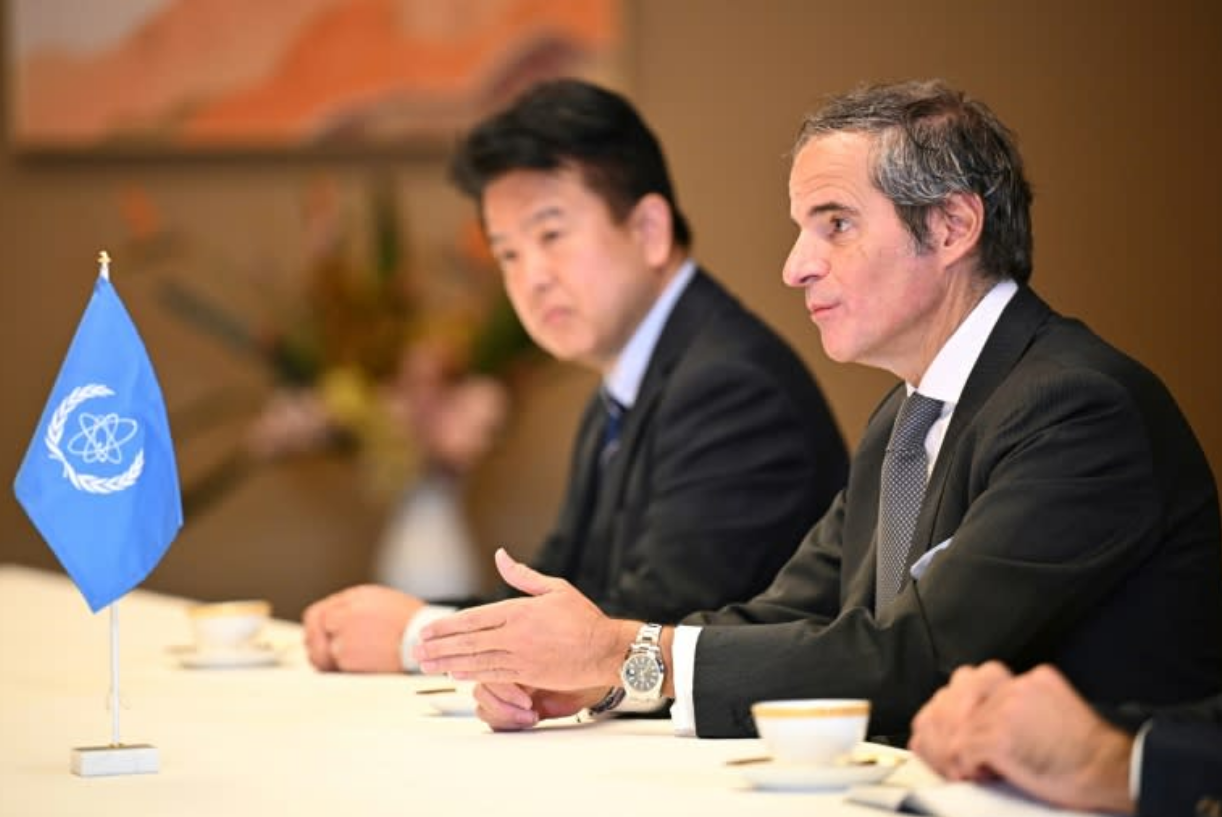
Japan eyes max N-power use for stability, decarbonization
TOKYO, April 21 (Jiji Press) -- The Japanese government has adopted a new basic energy plan emphasizing its commitment to "maximize" the use of nuclear power to meet rising electricity demand while balancing decarbonization and energy security.
The plan, approved in February, marks a policy shift away from reducing reliance on nuclear energy, a stance taken after the 2011 earthquake and tsunami triggered Japan's worst nuclear disaster.
Recognizing nuclear power as a carbon-free energy source, the new plan aims to increase the combined share of nuclear and renewable energy to as much as around 70 pct of the nation's power supply mix by fiscal 2040.
The basic energy plan, which outlines Japan's medium- and long-term strategy for electricity and resources, has been updated approximately every three years since its introduction in 2003.
The latest plan, the seventh in the series, aligns with the government's climate goals, which target a 60 pct reduction in greenhouse gas emissions by fiscal 2035 and a 73 pct cut by fiscal 2040, compared with fiscal 2013 levels.
It sets a target for nuclear power to account for about 20 pct of Japan's electricity generation in fiscal 2040, compared with the previous goal of 20 to 22 pct for fiscal 2030. Both figures represent more than double the fiscal 2023 level of 8.5 pct.
In the latest revision, the government removed the wording "Japan will reduce the dependence on nuclear power as much as possible," which had been included in response to the nuclear disaster at Tokyo Electric Power Company Holdings Inc.'s Fukushima No. 1 plant.
In the lead-up to the new plan's adoption, the government received a record 40,000-plus public comments, many of which raised concerns about the safety of nuclear power. The plan, however, simply noted the need to take these seriously.
Minister of Economy, Trade and Industry Yoji Muto acknowledged such concerns, saying, "We will provide careful explanations, including why nuclear energy is needed, to help dispel public fears."
The renewed emphasis on nuclear power is driven by an anticipated increase in construction and expansion projects for data centers and semiconductor factories, which consume large amounts of electricity, with the advent of an increasingly digitalized society.
The latest plan projects that Japan's power generation, which stood at less than one trillion kilowatt-hours in fiscal 2023, will grow to between 1.1 trillion and 1.2 trillion kilowatt-hours by fiscal 2040. The government maintains that meeting this expected demand reliably will be impossible without the use of nuclear power.
Reaching a 20 pct share for nuclear power remains a formidable challenge. Before the March 2011 nuclear disaster, nuclear energy accounted for about 30 pct of Japan's electricity supply. In the aftermath of the accident, however, all 54 reactors were temporarily shut down.
With stricter regulatory standards introduced after the disaster leading to a series of reactor decommissionings, Japan now has 36 reactors, including those still under construction.
To achieve the 20 pct target, Japan must ensure that most of its reactors are operational. Still, only 14 have been restarted so far, hindered by prolonged screening processes and other factors.
Given this background, the new basic energy plan not only emphasizes accelerating reactor restarts but also calls for promoting reactor reconstruction. Previously, new reactor construction was restricted to sites where a reactor had been or was being decommissioned. The latest revision relaxes this requirement, however, permitting construction on the premises of other nuclear power plants owned by the same utility undertaking decommissioning.
Hideki Masui, president and CEO of the Japan Atomic Industrial Forum, said, "In short, the latest plan clearly outlines a policy of promoting new plant construction."
Likely candidates include the successors to the No. 1 and No. 2 reactors at Kansai Electric Power Co.'s Mihama nuclear plant in Fukui Prefecture, which are currently being decommissioned. Additionally, a suspended expansion plan for Kyushu Electric Power Co.'s Sendai nuclear plant in Kagoshima Prefecture could be revived in exchange for the decommissioning of a reactor at the company's Genkai nuclear plant in Saga Prefecture.
But an official from a major electric power company highlighted the difficulties of building new reactors, noting, "(Whether construction proceeds) depends on decisions by the host local governments."
Even the reactivation of existing reactors remains stalled. TEPCO has yet to secure local government consent to restarting reactors at its Kashiwazaki-Kariwa nuclear plant in Niigata Prefecture, despite the completion of safety inspections.
The new basic energy plan also aims to reduce reliance on thermal power, which currently accounts for about 70 pct of Japan's electricity generation, lowering the figure to around 30 to 40 pct by fiscal 2040. At the same time, it seeks to increase the share of renewable energy from 22.9 pct in fiscal 2023 to roughly 40 to 50 pct, aiming to position it as the country's primary power source.
High hopes are placed on perovskite solar cells, which are thin and lightweight like film, and offshore wind power facilities, which hold potential for large-scale deployment. As these technologies are still at the development stage and face challenges including high costs, however, significant progress will be needed before a fully decarbonized society becomes a reality.
Jiji Press
Link nội dung: https://news.tuoitre.vn/japan-eyes-max-n-power-use-for-stability-decarbonization-103250421161433724.htm
